This is the second installation of our 3 part series on How to Grow Roses.
In Part 2 of the Growing Roses series, the regular care that is required of a newly planted rose will be discussed.
Tools needed:
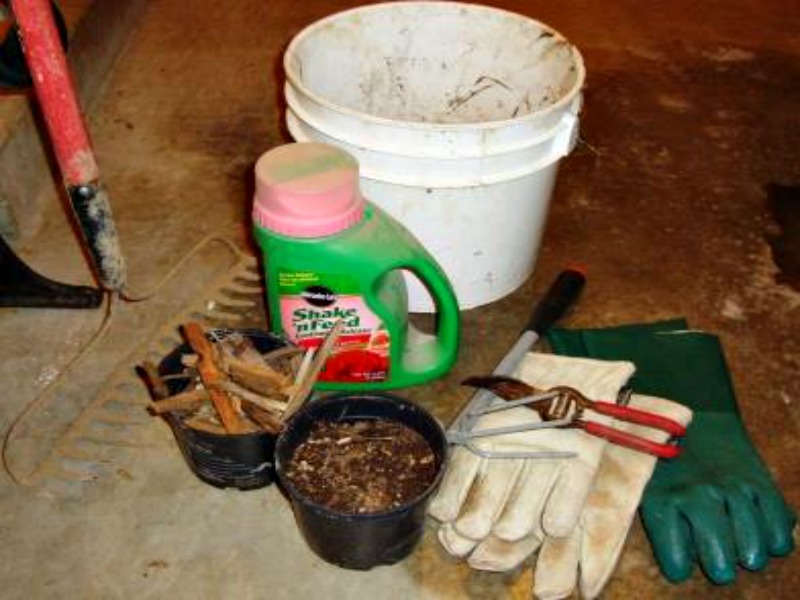
Rake and/or claw (the short, 3 pronged garden hand tool)
Thick leather gloves with long cuffs
Compost or aged manure
Mulch
Sharp pruners
Balanced fertilizer like a 5-10-5 or one specifically labeled for roses and measure as indicated on the label.
1 or more buckets to collect any cut flowers and/ or to remove any trimmings
Watering Roses:
Water regularly especially during plant establishment. If planting in the fall, make sure to water on a regular basis if rains are irregular.
Do not water plants at night or use overhead irrigation; apply water at the root zone.
For new plantings, soak the root zone thoroughly twice a week, avoiding frequent shallow watering. Deep watering encourages deeper roots and helps reduce fungal infections.
At least an inch a week of water is the general rule for established roses.
Make sure to maintain several inches of mulch to help conserve and maintain moisture in the soil around your new planting.
Feeding Roses:
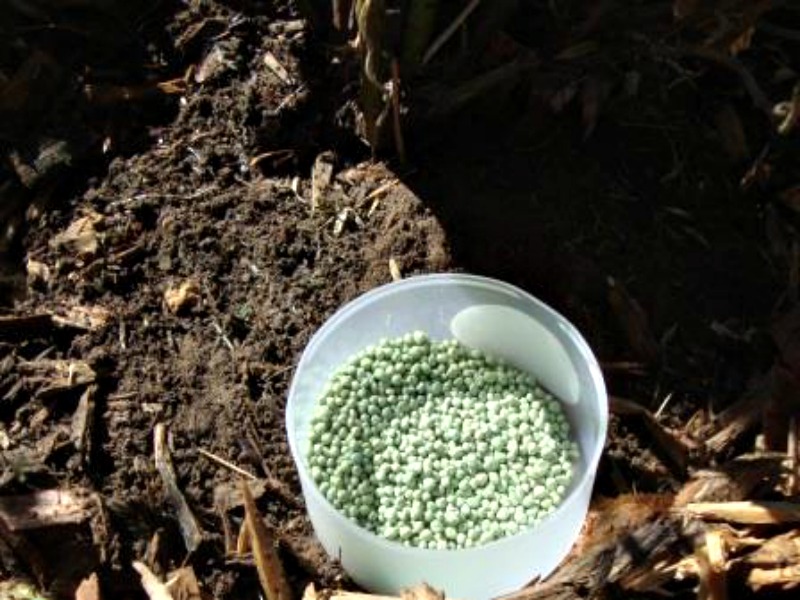 Feed roses on a regular basis with a balanced fertilizer like 5-10-5 or 5-10-10 or one specifically labeled for roses. Don’t over fertilize since the development of lush new growth, especially during spring and fall, is particularly susceptible to fungal pathogens.
Feed roses on a regular basis with a balanced fertilizer like 5-10-5 or 5-10-10 or one specifically labeled for roses. Don’t over fertilize since the development of lush new growth, especially during spring and fall, is particularly susceptible to fungal pathogens.
If using granular fertilizer, begin by pushing back the mulch to clear the area from the base of the stems or canes to the drip line (that is the line where the outer edge of the leaves would drip rain from when it rains).
Following label directions, measure out and sprinkle the recommended amount of fertilizer around the drip line of the rose, avoiding the base of the canes.
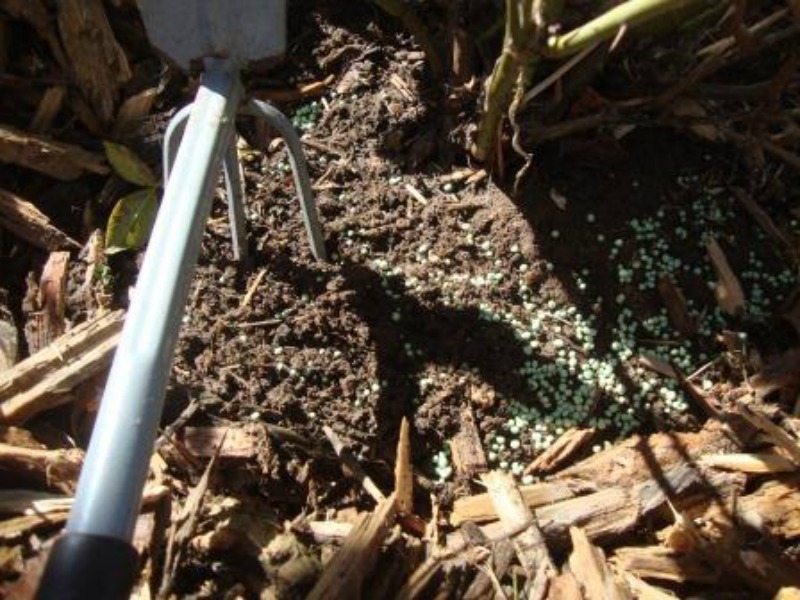 Incorporate granular fertilizer into the soil by using a rake or a claw so that it is mixed into the top surface of the soil.
Incorporate granular fertilizer into the soil by using a rake or a claw so that it is mixed into the top surface of the soil.
Smooth the mulch back into place when finished with your hands, claw or rake.
If leaves become pale and the veins become prominent (called chlorosis), fertilizer with micro nutrients including iron, should be used.
Stop fertilizing 6 weeks before the first frost date for your garden zone so that there is time for the rose to toughen up or harden off in preparation for winter.
After applying fertilizer, make sure to water it into the ground to avoid burning the plant.
Deadheading Roses:
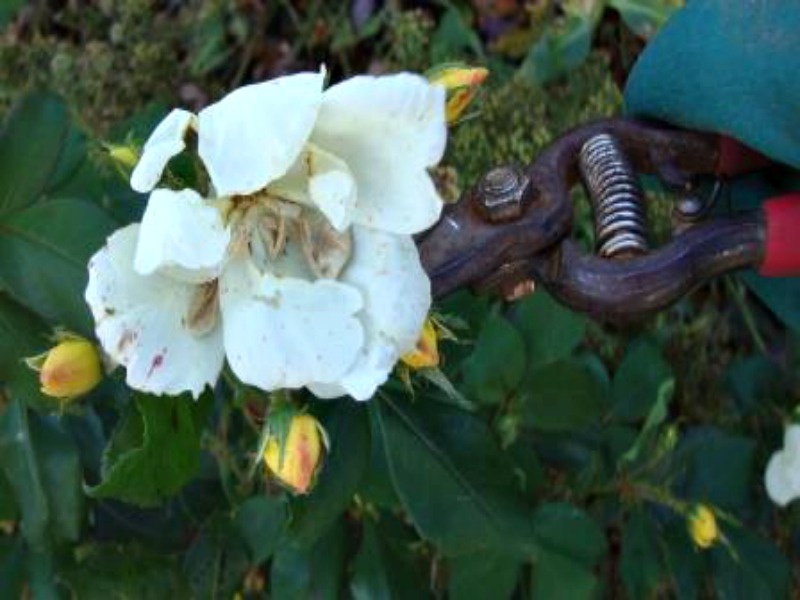 Removing faded flowers prevents energy going into seed production thus stimulating more flowers.
Removing faded flowers prevents energy going into seed production thus stimulating more flowers.
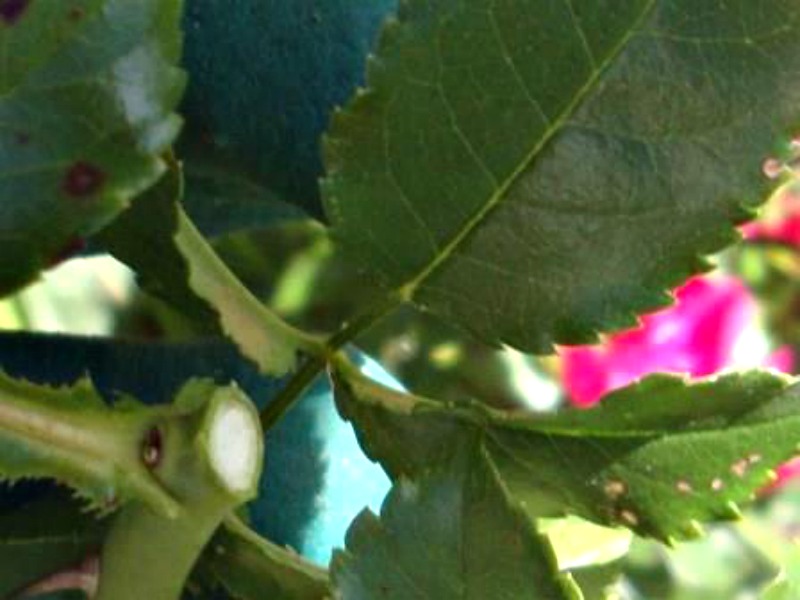 Cut at about a 45 ° angle with the angle facing away from the shoot or bud.
Cut at about a 45 ° angle with the angle facing away from the shoot or bud.
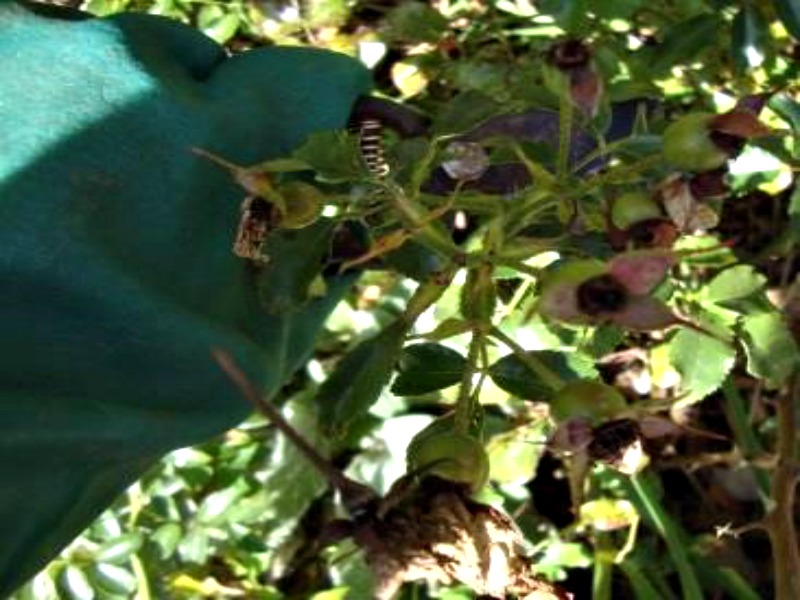 In roses produced in clusters, the central blooms are produced and fade first – remove those by pinching or snipping them out.
In roses produced in clusters, the central blooms are produced and fade first – remove those by pinching or snipping them out.
Once all of the cluster has faded, remove the whole cluster by cutting back to a bud. If a bud isn’t obvious, cut back the cluster to the desired height, which will stimulate a dormant bud to grow
 As deadheading proceeds, if diseased leaves or stems are seen, remove those while you are trimming.
As deadheading proceeds, if diseased leaves or stems are seen, remove those while you are trimming.
In the third and final part of the Growing Roses series, pruning, pest and disease control, and winterizing will be discussed.
GREAT INFO. Where can I see part 1 please.
Just use the search function on this site and enter roses Part 1.
Wonderful and easy